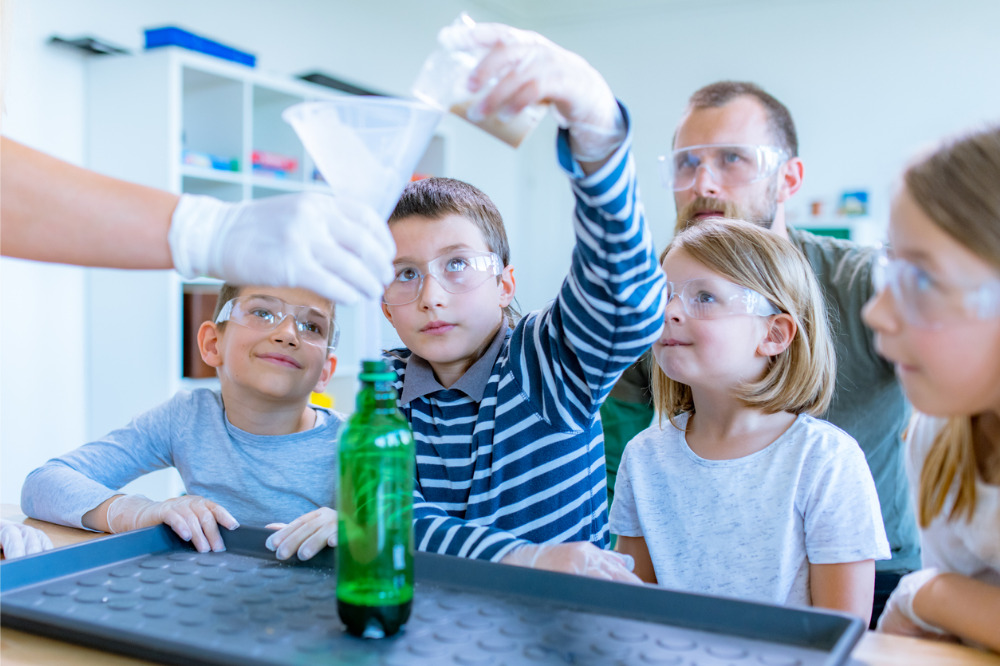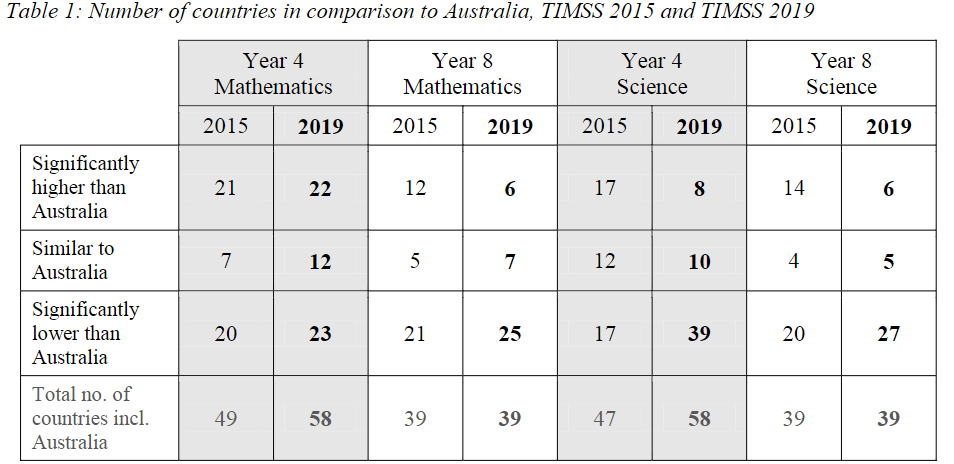
Australia has climbed into top 10 in Year 8 maths and science, and Year 4 science, the latest Trends in International Mathematics and Science Study (TIMSS) report shows.
TIMSS – the world’s longest running large-scale international assessment of mathematics and science – explores how well Year 4 and Year 8 students have mastered the factual and procedural knowledge taught in school mathematics and science classes.
More than 580 000 students from 64 countries and 8 benchmarking systems participated in the 2019 study, including 14 950 Australian students from 571 Australian schools.
According to the latest data, between 68-78% of Australian students achieved the TIMSS Intermediate international benchmark–the nationally agreed proficient standard–compared to more than 90% of students in the highest achieving country, Singapore.
However, the proportion of Australian students achieving this standard improved since 2015 in Year 8 science only. The report also identified a slump in Year 4 mathematics.

TIMSS National Research Coordinator and ACER Deputy CEO Dr Sue Thomson said the report includes “a good news story” in terms of improvement in mathematics and science in Years 4 and 8, as well as some progress towards Australia’s national education goals.
However, Dr Thomson noted that the results are not uniform.
“There is a clear relationship between disadvantage and underachievement,” she told The Educator.
“These results are a call to arms to everyone involved in education to find ways of redressing the imbalance in opportunities and resources available to these students, to help lift achievement for all Australian students”.
Dr Thomson said she was surprised by the widening gap between boys and girls in Year 4 mathematics.
“This is the opposite of the findings for the other subjects, which have either closed gaps [Year 8 mathematics and science] or never had a gap [Year 4 science],” she said.
“This is a concern for gender parity and, if it continues, may reverse the positive trend found in the other subjects and also have broader implications for women’s participation in STEM”.
Report shows ‘deep inequality’ for disadvantaged kids
Australian Education Union (AEU) Federal President Correna Haythorpe said the report “exposed the Federal Government’s lack of interest” in building a truly needs-based school funding system to address entrenched inequity.
“Despite over a decade of national dialogue about the importance of needs-based funding and the important link between equitable funding distribution and student outcomes, TIMSS 2019 has highlighted the unmet funding need in public schools and its impact on students,” Haythorpe said.
“The Federal Government’s failure to ensure that schools have the resources necessary to work with students who have lower achievement levels is a clear indictment of its inequitable school funding methodology, and a complete abrogation of needs-based policies.”
The report found that students from Aboriginal and Torres Strait Islander backgrounds were more than three times more likely to display lower achievement levels than non-Indigenous students.
The equity gap is also evident in remote schools, with those students up to five times more likely to display lower achievement levels compared to their metropolitan peers.
Haythorpe said that it was a joint responsibility between the Commonwealth and State and Territory governments to ensure that public schools have the resources needed to cater for the educational needs of every child.
“Public schools teach the vast majority of students, including 80% of students from disadvantaged backgrounds, who have the highest level of need,” Haythorpe said.
“This report must be an urgent call to action for all governments to address the growing funding gaps for public schools. For every child to achieve their full potential, Australia’s school funding inequality must be rectified.”


